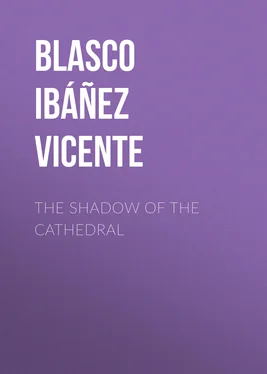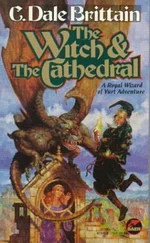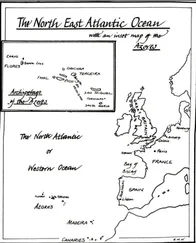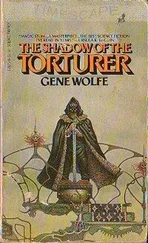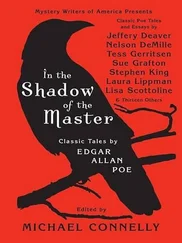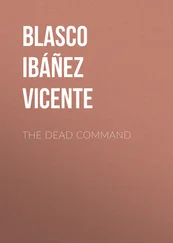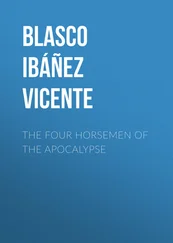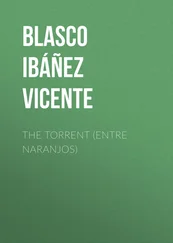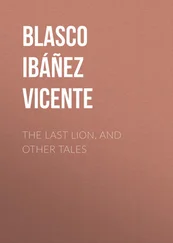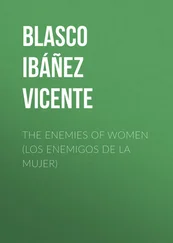Vicente Blasco Ibáñez - The Shadow of the Cathedral
Здесь есть возможность читать онлайн «Vicente Blasco Ibáñez - The Shadow of the Cathedral» — ознакомительный отрывок электронной книги совершенно бесплатно, а после прочтения отрывка купить полную версию. В некоторых случаях можно слушать аудио, скачать через торрент в формате fb2 и присутствует краткое содержание. Жанр: foreign_prose, foreign_antique, на английском языке. Описание произведения, (предисловие) а так же отзывы посетителей доступны на портале библиотеки ЛибКат.
- Название:The Shadow of the Cathedral
- Автор:
- Жанр:
- Год:неизвестен
- ISBN:нет данных
- Рейтинг книги:4 / 5. Голосов: 1
-
Избранное:Добавить в избранное
- Отзывы:
-
Ваша оценка:
- 80
- 1
- 2
- 3
- 4
- 5
The Shadow of the Cathedral: краткое содержание, описание и аннотация
Предлагаем к чтению аннотацию, описание, краткое содержание или предисловие (зависит от того, что написал сам автор книги «The Shadow of the Cathedral»). Если вы не нашли необходимую информацию о книге — напишите в комментариях, мы постараемся отыскать её.
The Shadow of the Cathedral — читать онлайн ознакомительный отрывок
Ниже представлен текст книги, разбитый по страницам. Система сохранения места последней прочитанной страницы, позволяет с удобством читать онлайн бесплатно книгу «The Shadow of the Cathedral», без необходимости каждый раз заново искать на чём Вы остановились. Поставьте закладку, и сможете в любой момент перейти на страницу, на которой закончили чтение.
Интервал:
Закладка:
"These," said he proudly, "belong to the towns and castles I have gained for the Papacy. These are my accounts."
The irresistible glamour that a powerful warrior throws over a man physically feeble was strongly felt by Gabriel, and it was augmented by the thought that so much bravery and haughtiness had been joined in a servant of the Church. Why could not men like this arise now, in these impious times, to give fresh strength to Catholicism?
In his strolls through the Cathedral Gabriel greatly admired the screen before the high altar, a wonderful work of Villalpando, with its foliage of old gold, and its black bars with silvery spots like tin. These spots made the beggars and guides in the church declare that all the screen was made of silver, but that the canons had had it painted black so that it might not be plundered by Napoleon's soldiers.
Behind it shone the majestic decorations of the high altar, splendid with soft old gilding, and a whole host of figures under carved canopies representing various scenes from the Passion. Behind the altar and the screen the gilding seemed to spring spontaneously from the white walls, marking with brilliant lights the divisions between the stalls. Beneath highly-decorated pointed arches were the tombs of the most ancient kings of Castille, and that of the Cardinal Mendoza.
Under the arches of the triforium an orchestra of Gothic angels with stiff dalmatics and folded wings sang lauds, playing lutes and flutes, and in the central parts of the pillars the statues of holy bishops were interspersed with those of historical and legendary personages.
On one side the good Alfaqui Abu-Walid, immortalised in a Christian church for his tolerant spirit, on the opposite side the mysterious leader of Las Navas who, after showing the Christians the way to victory, suddenly disappeared like a divine envoy—a statue of exceeding ugliness with a haggard face covered by a rough hood. At either end of the screen stood as evidences of the past opulence of the church two beautiful pulpits of rich marbles and chiselled bronze.
Gabriel cast a glance at the choir, admiring the beautiful stalls belonging to the canons, and he thought enthusiastically that perhaps some day he might succeed in gaining one to the great pride of his family. In his wanderings about the church he would often stop before the immense fresco of Saint Christopher, a picture as bad as it was huge—a figure occupying all one division of the wall from the pavement to the cornice, and which by its size seemed to be the only fitting inhabitant of the church. The cadets would come in the evenings to look at it; that colossus of pink flesh, bearing the child on its shoulders, advancing its angular legs carefully through the waters, leaning on a palm tree that looked like a broom, was for them by far the most noticeable thing in the church. The light-hearted young men delighted in measuring its ankles with their swords and afterwards calculating how many swords high the blessed giant could be. It was the readiest application that they could make of those mathematical calculations with which they were so much worried in the academy. The apprentice of the church was irritated at the impudence with which these dressed up popinjays, the apprentices of war, sauntered about the church.
Many mornings he would go to the Muzarabé Chapel, following attentively the ancient ritual, 19 19 The Muzarabé ritual is still sung in Arabic both in Toledo and Salamanca.
intoned by the priests especially devoted to it. On the walls were represented in brilliant colours scenes from the conquest of Oran by the great Cisneros. As Gabriel listened to the monotonous singing of the Muzarabe priests he remembered the quarrels during the time of Alfonso VI. between the Roman liturgy and that of Toledo—the foreign worship and the national one. The believers, to end the eternal disputes, appealed to the "Judgment of God." The king named the Roman champion, and the Toledans confided the defence of their Gothic rite to the sword of Juan Ruiz, a nobleman from the borders of Pisuerga. The champion of the Gothic breviary remained triumphant in the fight, demonstrating its superiority with magnificent sword thrusts, but, in spite of the will of God having been manifested in this warlike way, the Roman rite by slow degrees became master of the situation, till at last the Muzarabé ritual was relegated to this small chapel as a curious relic of the past.
Sometimes in the evenings, when the services were ended and the Cathedral was locked up, Gabriel would go up to the abode of the bell-ringer, stopping on the gallery above the door del Perdon. Mariano, the bell-ringer's son, a youth of the same age as the seminarist, and attached to him by the respect and admiration his talents inspired, would act as guide in their excursions to the upper regions of the church; they would possess themselves of the key of the vaultings and explore that mysterious locality to which only a few workmen ascended from time to time.
The Cathedral was ugly and commonplace seen from above. In the very early days the stone vaultings had remained uncovered, with no other concealment beyond the light-looking carved balustrade, but the rain had begun to damage them, threatening their destruction, and so the Chapter had covered the Cathedral with a roof of brown tiles, which gave the Church the appearance of a huge warehouse or a great barn. The pinnacles of the buttresses seemed ashamed to appear above this ugly covering, the flying buttresses became lost and disappeared among the bare-looking buildings, built on to the Cathedral, and the little staircase turrets became hidden behind this clumsy mass of roofing.
The two youths climbing along the cornices, green and slippery from the rain, would mount to quite the upper parts of the building. Their feet would become entangled in the plants that a luxuriant nature allowed to grow amid the joints of the stones, flocks of birds would fly away at their approach; all the sculptures seemed to serve as resting-places for their nests, and every hollow in the stone where the rain-water collected was a miniature lake where the birds came to drink; sometimes a large black bird would settle on one of the pinnacles like an unexpected finial; it was a raven who settled there to plume his wings, and it would remain there sunning itself for hours; to the people who saw it from below it appeared about the size of a fly.
These vaultings caused Gabriel a strange impression; no one could guess the existence of such a place in the upper regions of the building. He would walk through the forest of worm-eaten posts which supported the roof, through narrow passages between the cupolas of the vaulting that arose from the flooring like white and dusty tumours; sometimes there would be a shaft through which he could see down into the Cathedral, the depth of which made him giddy. These shafts were like narrow well-mouths at the bottom of which could be seen people walking like ants on the tile flooring of the church. Through these shafts were lowered the ropes of the great chandeliers, and the golden chains that supported the figure of Christ above the railing of the high altar. Enormous capstans showed through the twilight their cogged and rusty wheels, their levers and ropes like forgotten instruments of torture. This was the hidden machinery belonging to the great religious festivals; by these artifices the magnificent canopy of the holy week was raised and fastened.
As the sun's rays shone in between the wooden posts the dust of ages that lay like a thick mantel on the roof of the vaulting would rise and dance in them for a few seconds, and the huge old spiders' webs would wave like fans in the wind, while the footsteps of the intruders would occasion wild and precipitous scrambles of rats from all the dark corners. In the furthest and darkest corners roosted those black birds who by night flew down into the church through the shafts in the vaulting, and the eyes of the owls glowed with phosphorescent brilliancy, while the bats flew sleepily about sweeping the faces of the lads with their wings.
Читать дальшеИнтервал:
Закладка:
Похожие книги на «The Shadow of the Cathedral»
Представляем Вашему вниманию похожие книги на «The Shadow of the Cathedral» списком для выбора. Мы отобрали схожую по названию и смыслу литературу в надежде предоставить читателям больше вариантов отыскать новые, интересные, ещё непрочитанные произведения.
Обсуждение, отзывы о книге «The Shadow of the Cathedral» и просто собственные мнения читателей. Оставьте ваши комментарии, напишите, что Вы думаете о произведении, его смысле или главных героях. Укажите что конкретно понравилось, а что нет, и почему Вы так считаете.
